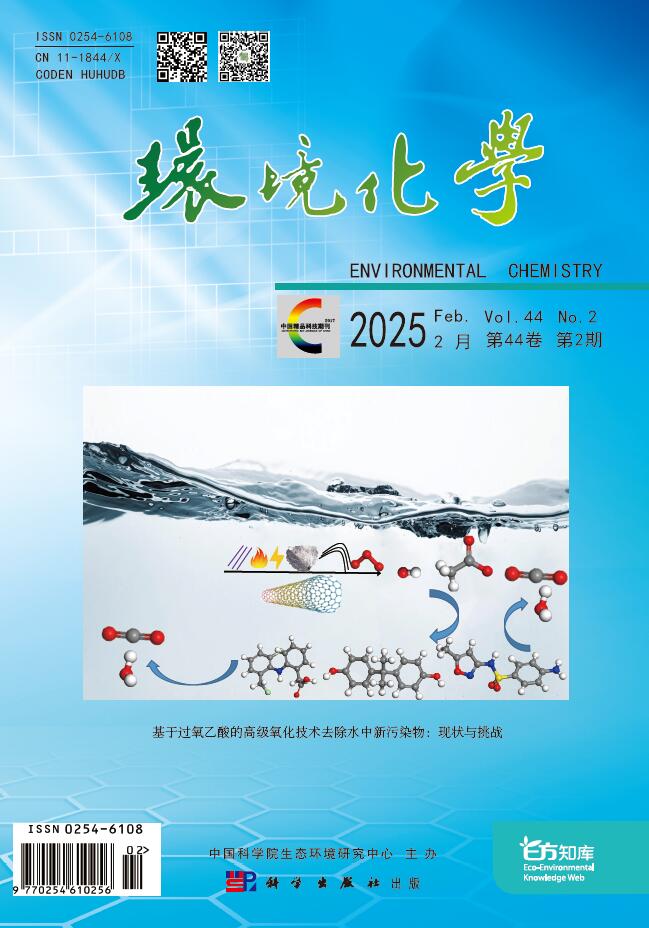|
[1]
|
UNEP. Mercury fate and transport in the global atmosphere:Measurement, models and policy implication report[R]. Geneva:UNEP, 2008.
Google Scholar
Pub Med
|
|
[2]
|
UNEP. Global mercury assessment 2013:Sources, emissions, releases and environmental transport[R]. Geneva, Switzerland:UNEP Chemicals Branch, 2013.
Google Scholar
Pub Med
|
|
[3]
|
孙淑静, 刘学敏. 我国粉煤灰资源化利用现状、问题及对策分析[J]. 粉煤灰综合利用, 2015(3):49-52. SUN S J, LIU X M. Recycling utilization of fly ash in china:Situations, problems and countermeasures[J]. Fly Ash Comprehensive Utilization, 2015
(3):49-52(in Chinese).
Google Scholar
Pub Med
|
|
[4]
|
任建莉, 周劲松, 骆仲泱, 等. 燃煤电站汞排放分布及控制研究的进展[J]. 电站系统工程, 2006, 22(1):44-46.
REN J L, ZHOU J S, LUO Z Y, et al. A review of mercury speciation and control for coal-fired power plants[J]. Power System Engineering, 2006, 22(1):44-46(in Chinese).
Google Scholar
Pub Med
|
|
[5]
|
PAVLISH J H, SONDREAL E A, MANN M D, et al. Status review of mercury control options for coal-fired power plants[J]. Fuel Processing Technology, 2003, 82(2):89-165.
Google Scholar
Pub Med
|
|
[6]
|
姚多喜, 支霞臣, 郑宝山. 煤燃烧过程中5种微量元素的迁移和富集[J]. 环境化学, 2004, 23(1):31-37.
YAO D X, ZHI X C, ZHENG B S. The transformation and concentration of 5 trace elements during coal combustion[J]. Environmental Chemistry, 2004, 23(1):31-37(in Chinese).
Google Scholar
Pub Med
|
|
[7]
|
孟阳, 王书肖. 粉煤灰综合利用过程中汞的二次释放规律研究[J]. 环境科学, 2012, 33(9):2993-2999.
MENG Y, WANG S X. Study on mercury re-emissions during fly ash utilization[J]. Environmental Science, 2012, 33(9):2993-2999(in Chinese).
Google Scholar
Pub Med
|
|
[8]
|
张淼, 张梦泽, 董勇. 燃煤电厂固废利用过程中汞的二次污染分析[J]. 节能技术, 2014, 32(1):45-47.
ZHANG M, ZHANG M Z, DONG Y. Analyze of mercury re-emission during the utilization of coal-fired power plant solid wastes[J]. Energy Conservation Technology, 2014, 32(1):45-47(in Chinese).
Google Scholar
Pub Med
|
|
[9]
|
RUBEL A M, HOWER J C, MARDON S M, et al. Thermal stability of mercury captured by ash[J]. Fuel, 2006, 85(17-18):2509-2515.
Google Scholar
Pub Med
|
|
[10]
|
武成利, 陈晨, 田梦琦, 等. 燃煤电厂粉煤灰中汞的稳定性研究[J]. 环境污染与防治, 2016, 38(6):20-23.
WU C L, CHEN C, TIAN M Q, et al. Study on the stability of mercury in fly ash at coal-fired power plant[J]. Environmental Pollution and Prevention, 2016,38(6):20-23(in Chinese).
Google Scholar
Pub Med
|
|
[11]
|
高正阳, 吕少昆, 陈嵩涛, 等. ESP对燃煤电站锅炉颗粒汞形态及热稳定性的影响[J]. 华北电力大学学报:自然科学版, 2015, 42(1):63-68.
GAO Z Y, LV S K, CHEN S T, et al. ESP effects on particulate mercury speciation and thermal stability in coal-fired utility boiler[J]. Journal of North China Electric Power University, 2015, 42(1):63-68(in Chinese).
Google Scholar
Pub Med
|
|
[12]
|
程乐鸣, 岑可法, 倪明江, 等.循环流化床锅炉炉膛热力计算[J].中国电机工程学报,2002,22(12):146-151.
CHENG L M, CEN K F, NI M J, et al. Thermal calculation of a circulating fluidized bed boiler furnace[J]. Proceedings of the CSEE, 2002, 22(12):146-151(in Chinese).
Google Scholar
Pub Med
|
|
[13]
|
姜秀民, 孙东红, 闫澈, 等. 65t/h示范性油页岩循环流化床电厂锅炉运行实践[J].中国电机工程学报,2001,21(2):69-73.
JIANG X M, SUN D H, YAN C, et al. Performance characteristics of 65t/h oil shale-fired circulating fluidized bed demonstration utility boiler[J].Proceedings of the CSEE,2001,21(2):69-73(in Chinese).
Google Scholar
Pub Med
|
|
[14]
|
谢磊, 毛国明, 金晓明,等. 循环流化床锅炉燃烧过程预测控制与经济性能优化[J]. 化工学报, 2016, 67(3):695-700.
XIE L, MAO G M, JIN X M, et.al. Predictive control and economic performance optimization of CFBB combustion process[J]. CIESC Journal, 2016, 67(3):695-700(in Chinese).
Google Scholar
Pub Med
|
|
[15]
|
WANG S, ZHANG Y, GU Y, et al. Using modified fly ash for mercury emissions control for coal-fired power plant applications in China[J]. Fuel, 2016, 16; 1230-1237.
Google Scholar
Pub Med
|
|
[16]
|
段钰锋, 江贻满, 杨立国,等. 循环流化床锅炉汞排放和吸附实验研究[J]. 中国电机工程学报, 2008, 28(32):1-5.
DUAN Y F, JIANG Y M, YANG L G, et.al. Experimental study on mercury emission and adsorption in circulating fluidized bed boiler[J]. Proceedings of the CSEE, 2008, 28(32):1-5(in Chinese).
Google Scholar
Pub Med
|
|
[17]
|
樊保国, 贾里, 李晓栋, 等. 电站燃煤锅炉飞灰特性对其吸附汞能力的影响[J]. 动力工程学报, 2016, 36(8):621-628.
FAN B G, JIA L, LI X D, et.al. Study on mercury adsorption by fly ash form coal-fired coilers of power plants[J]. Journal of Chinese Society of Power Engineering, 2016, 36(8):621-628(in Chinese).
Google Scholar
Pub Med
|
|
[18]
|
李晓航, 刘芸, 苏银皎, 等. 煤粉炉和循环流化床锅炉飞灰特性对其汞吸附能力的影响[J]. 化工学报, 2019, 70(3):295-302.
LI X H, LIU Y, SU Y J, et al. Difference of fly ash characteristics from PC and CFB boilers and its effect on mercury adsorption capability[J]. CIESC Journal, 2019, 70(3):295-302(in Chinese).
Google Scholar
Pub Med
|
|
[19]
|
李晓航,刘红刚,路建洲,等.煤粉炉和循环流化床锅炉飞灰吸附汞动力学及其吸附机制[J]. 化工学报, 2019,70(11):4397-4409.
LI X H, LIU H G, LU J Z, et al. Kinetics and mechanism of mercury adsorption on fly ashes from pulverized coal boiler and circulating fluidized bed boiler[J]. CIESC Journal, 2019, 70(11):4397-4409(in Chinese).
Google Scholar
Pub Med
|
|
[20]
|
苏银皎, 刘轩, 李丽锋, 等. 三类煤阶煤中汞的赋存形态分布特征[J]. 化工学报, 2019, 70(4):324-331.
SU Y J, LI X H, LI L F, et al. Distribution characteristics of mercury speciation in coals with three different ranks[J]. CIESC Journal, 2019, 70(4):324-331(in Chinese).
Google Scholar
Pub Med
|
|
[21]
|
LOPZE-ANTON M A, YUAN Y, PERRY R, et al. Analysis of mercury species present during coal combustion by thermal desorption[J]. Fuel, 2010, 89(3):629-634.
Google Scholar
Pub Med
|
|
[22]
|
于颖, 邵子婴, 刘靓,等. 热强化气相抽提法修复半挥发性石油烃污染土壤的影响因素[J]. 环境工程学报, 2017, 11(4):2252-2257.
YU Y, SHAO Z Y, LIU L, et al. Factors influencing remediation of semi-volatile petroleum hydrocarbon-contaminated soil by thermally enhanced soil vapor extraction[J]. Chinese Journal of Environmental Engineering, 2017,11(4):2252-2257(in Chinese).
Google Scholar
Pub Med
|
|
[23]
|
涂从. 土壤体系中的化学动力学方程及其应用[J]. 热带亚热带土壤科学, 1994, 3(3):175-182.
TU C. Equations of chemical kineties and their application to soil system[J]. Tropical and Subtropical Soil Science, 1994,3(3):175-182(in Chinese).
Google Scholar
Pub Med
|
|
[24]
|
许端平, 何依琳, 庄相宁, 等. 热解吸修复污染土壤过程中DDTs的去除动力学[J]. 环境科学研究, 2013, 26(2):202-207.
XU D P, HE Y L, ZHUANG X Y, et al. Desorption kinetics of DDTs from contaminated soil during processes of thermal desorption[J]. Research of Environmental Sciences, 2013, 26(2):202-207(in Chinese).
Google Scholar
Pub Med
|
|
[25]
|
COURCHESNE F, HENDERSHOT W H. Kinetics of sulfate of desorption from two spodosols of the laurentians, quebec1[J]. Soil Science, 1990, 150(6):858-866.
Google Scholar
Pub Med
|





 DownLoad:
DownLoad:
